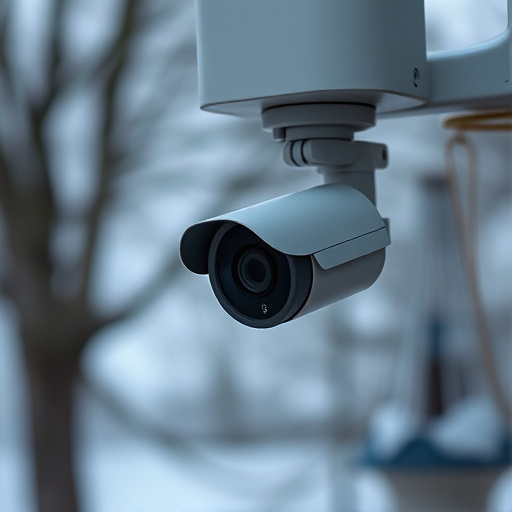Wireless hidden cameras in apartments pose significant privacy risks due to advanced technologies like Wi-Fi and Bluetooth. Detection involves understanding camera operation, monitoring network activity, and using specialized tools such as signal detectors, RF analyzers, direction-finding antennas, and frequency scanning software/apps. Common installation locations include common areas and spaces with optimal viewing angles. Residents should remain vigilant against unusual activity and check for signs of power sources or layout symmetry. Legal considerations emphasize the importance of consent and data protection to avoid penalties and safeguard privacy.
Uncover the insidious world of wireless hidden cameras with this comprehensive guide. In today’s digital age, awareness is key when it comes to protecting your privacy, especially in apartments. Understanding how these devices operate and mastering signal detection techniques are essential steps. We’ll explore advanced tools and methods to identify potential threats, revealing common placement strategies employed by clandestine cameras. Additionally, we’ll navigate the legal landscape surrounding privacy rights, ensuring you’re equipped with knowledge to safeguard your personal space.
- Understanding Wireless Hidden Camera Technology
- Detecting Signals: Tools and Techniques
- Common Placement and Behavior Patterns
- Legal Considerations and Privacy Rights
Understanding Wireless Hidden Camera Technology
Wireless hidden cameras have become increasingly sophisticated, making them a prevalent concern in apartment settings. These devices often employ advanced technologies like Wi-Fi or Bluetooth to transmit footage discreetly to the user’s device. Understanding how they operate is crucial for detection. One of the most common types uses wireless networks, mimicking standard internet connections but with covert video transmission capabilities.
Detecting these cameras involves being aware of unusual network activity. For instance, a newly connected device drawing significant bandwidth or an unknown access point can be a red flag. Regularly scanning for new devices on your Wi-Fi network and keeping an eye on data usage patterns can help in identifying potential hidden camera signals. Additionally, using specific apps designed to detect wireless hidden cameras can enhance these efforts, making it easier to uncover clandestine surveillance in apartments.
Detecting Signals: Tools and Techniques
Detecting hidden camera signals is a critical step in ensuring privacy and security, especially in apartments where wireless hidden cameras are increasingly prevalent. The first line of defense involves utilizing specialized tools designed to sniff out these signals. Devices like signal detectors or RF (radio frequency) analyzers can identify unusual electromagnetic emissions, which might indicate the presence of a hidden camera. These tools scan a wide range of frequencies and can pick up on signals that regular electronics may not detect.
Another effective technique is to employ direction-finding antennas, which help pinpoint the source of a signal. By measuring signal strength from multiple locations, you can create a map of interference or anomalies, potentially leading right to the hidden camera. Additionally, using frequency scanning software and apps developed for this purpose allows users to monitor changes in wireless networks and identify unusual activity, further aiding in the detection process for Wireless Hidden Cameras for Apartments.
Common Placement and Behavior Patterns
Wireless hidden cameras for apartments are often strategically placed in common areas and spaces that offer optimal viewing angles. These can include entryways, corridors, living rooms, kitchens, and even bedrooms. Understanding typical behavior patterns is key to detecting these devices. Many such cameras operate remotely and discreetly, capturing video footage without drawing attention. They may be triggered by motion sensors or programmed to record at specific times, making it important for residents to remain vigilant and look for unusual activity, like unexplained lights flickering or strange noises coming from walls.
Identifying potential hidden camera locations involves checking for any unfamiliar electrical outlets, cables, or holes in the walls. Wireless cameras often require a power source, leaving behind telltale signs if not properly concealed. Additionally, be wary of excessive mirroring or symmetry in room layout, as this could indicate a strategically placed camera lens. Regular inspections and awareness can help residents protect their privacy in the face of these evolving surveillance technologies.
Legal Considerations and Privacy Rights
When it comes to detecting hidden monitoring devices, such as wireless hidden cameras in apartments, understanding legal considerations and privacy rights is paramount. Different jurisdictions have varying laws regarding the installation and use of surveillance equipment, so it’s crucial to familiarize yourself with local regulations before taking any action. In many places, covert placement of cameras without the consent of all parties involved is illegal and can result in severe penalties.
Privacy rights are a key aspect to consider. Tenants or residents have a reasonable expectation of privacy in their living spaces, and the unauthorized use of hidden cameras can infringe upon these rights. It’s essential to obtain proper consent from all occupants and ensure any monitoring system complies with data protection laws to avoid legal repercussions and maintain the integrity of personal information.
In the realm of wireless hidden camera technology, understanding the signals they emit is key to maintaining privacy in apartments. By utilizing specialized tools and techniques discussed in this article, residents can effectively detect these devices. Awareness of common placement patterns and legal considerations further empowers folks to protect their personal spaces. Equipped with this knowledge, individuals can navigate the intricate landscape of apartment security, ensuring their rights and peace of mind.
